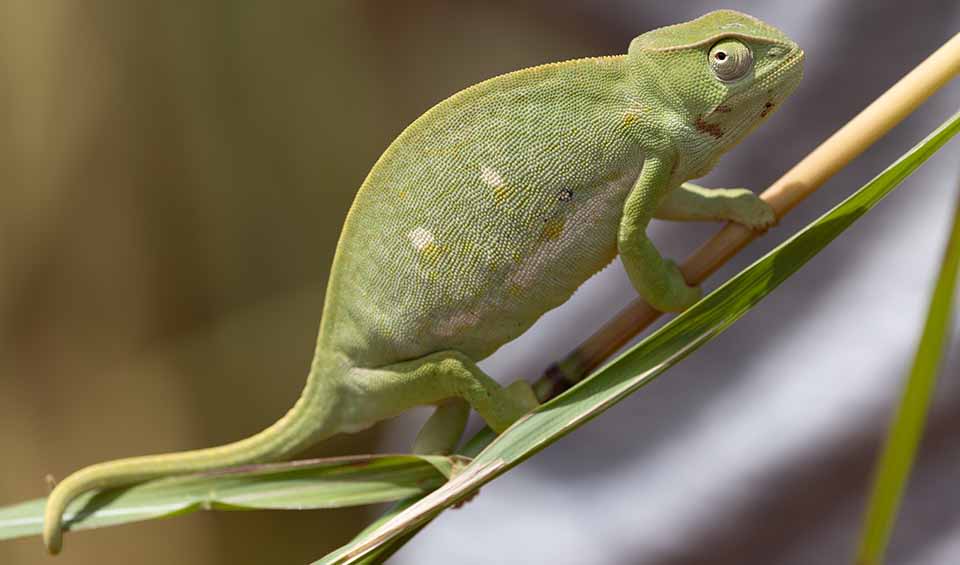A small, quiet marvel of nature found in the savannas, woodlands, and edges of forests in West Africa, especially in countries like Senegal, Mali, Ghana, and Nigeria. Although it’s not as vividly colored as some of its relatives from Madagascar or East Africa, this chameleon is still a fascinating and beautiful creature, best known for its slow, deliberate movements, independently moving eyes, and ability to change color in subtle ways.
The Senegal chameleon has a slender, laterally flattened body and a prehensile tail that it uses like a fifth limb to grasp branches. Its coloration is usually a blend of light green, olive, or brown, often with faint patterning or spots. Unlike the flashy color shifts of some other species, its color changes are more modest and mood-based, reflecting temperature, stress, or excitement, such as during mating or encounters with rivals.
One of its most remarkable traits is its ability to move each eye independently, allowing it to scan its surroundings for predators or prey without turning its head. When it spots an insect, both eyes lock forward, and the chameleon fires its long, sticky tongue, which can be longer than its body, with incredible speed and accuracy to snatch up the target.
The Senegal chameleon is a solitary and territorial species, most active during the day and usually found perched in shrubs, low trees, or among tall grasses. It is a sit-and-wait predator, preferring to stay still and let prey come within striking distance. Its diet consists mainly of insects such as crickets, grasshoppers, flies, and beetles, making it a valuable pest controller in its natural habitat.
Distribution
 Benin
Benin Burkina Faso
Burkina Faso Cameroon
Cameroon Côte D’ivoire
Côte D’ivoire Gambia
Gambia Ghana
Ghana Guinea-Bissau
Guinea-Bissau Guinea
Guinea Mali
Mali Niger
Niger Nigeria
Nigeria Senegal
Senegal Togo
TogoAnything we've missed?
Help us improve this page by suggesting edits. Glory never dies!
Suggest an editGet to know me
Terrestrial / Aquatic
Altricial / Precocial
Polygamous / Monogamous
Dimorphic (size) / Monomorphic
Active: Diurnal / Nocturnal
Social behavior: Solitary / Pack / Herd
Diet: Carnivore / Herbivore / Omnivore / Piscivorous / Insectivore
Migratory: Yes / No
Domesticated: Yes / No
Dangerous: Yes / No




